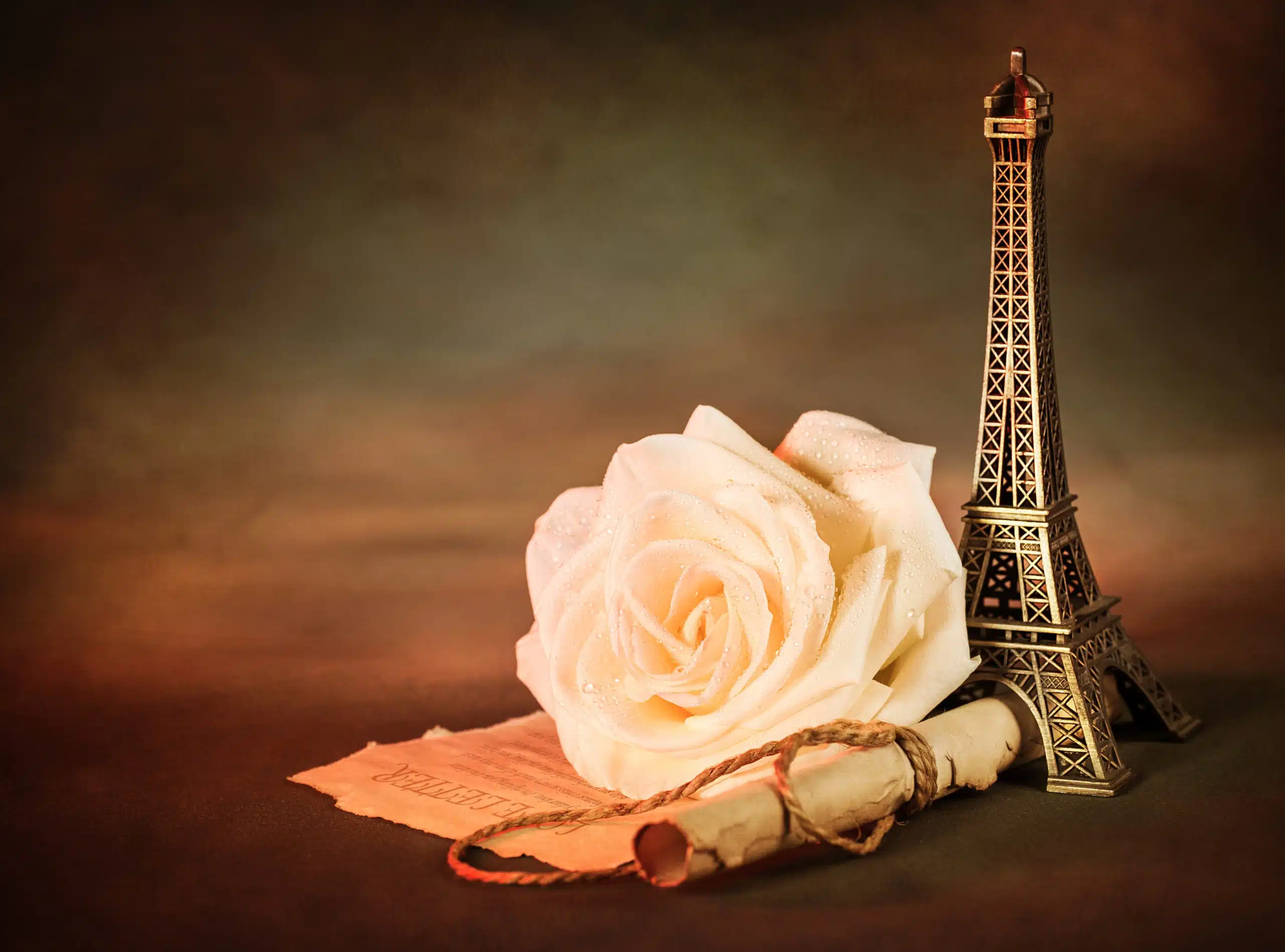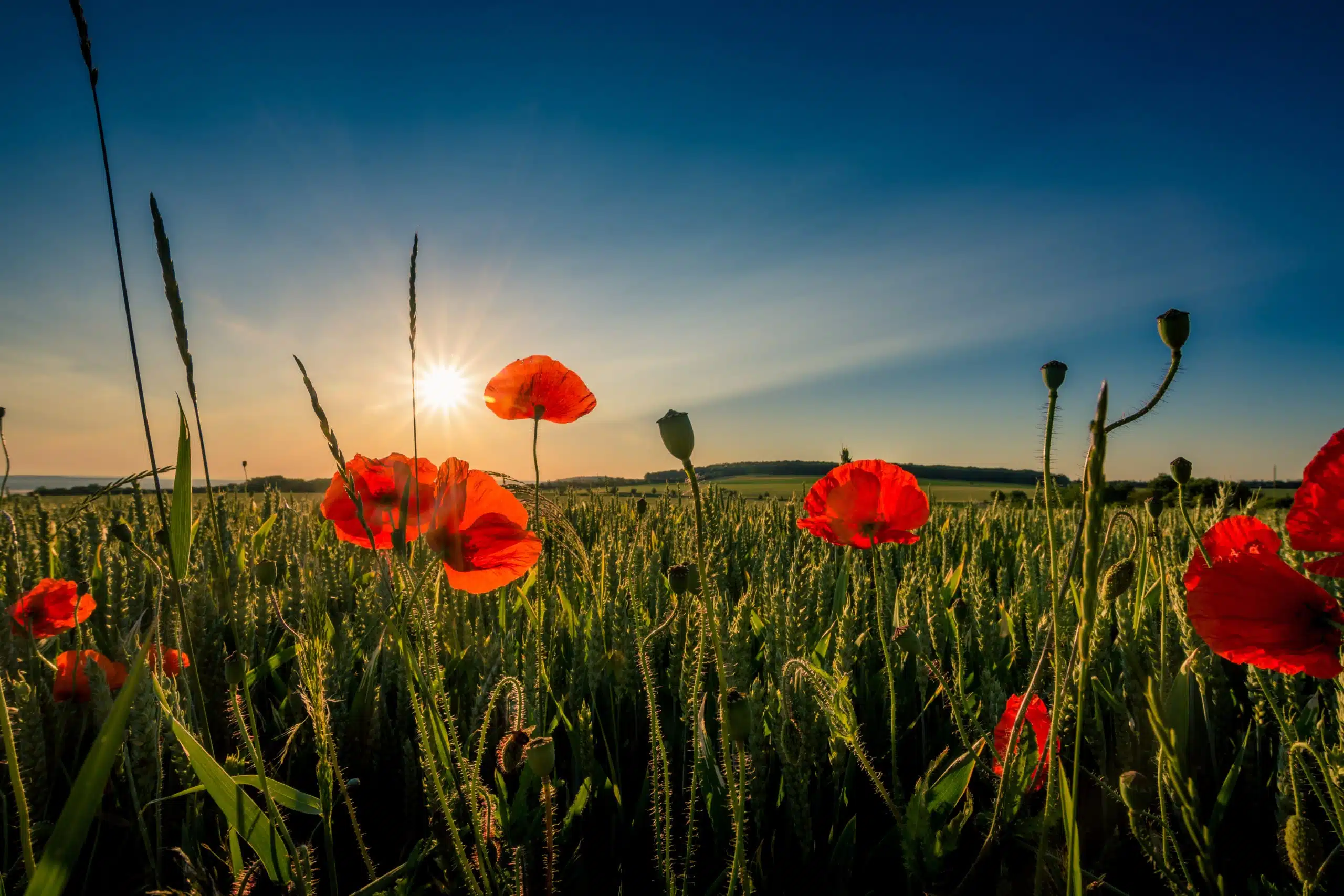Here’s what the Rondeau poetry form is:
The Rondeau is a fixed poem type of French origin.
It is composed of 15 lines that are divided into three stanzas namely, a quintet, a quatrain, and a sestet.
The first and the last lines of a rondeau are identical and it follows the aabba aabR aabbaR rhyme scheme.
So if you want to learn all about the Rondeau poetry type, then you’ve come to the right place.
Keep reading!
- Dizain Poetry Form: Speak in Passionate Tones
- Kyrielle Poetry Form: Let Your Feelings Resonate
- Ballade Poetry Form: Unlock the Sonata of Desire

Forms of Poetry: The Rondeau

The rondeau is one of the forme fixe that were popular in medieval and Renaissance France.
Each of these strict formal poems had multiple variations and was representative of poems that were meant to be sung for entertainment, usually with instrumental accompaniment.
Rondeaus (or the French plural rondeaux if you’re feeling fancy) have gone through extensive evolutions until eventually arriving on a surprisingly simple 15-line variant in modern English.
This article will explore a few of the variations as well, since everything from the 21-line rondeau cinquain to the 8-line rondeau simple is just as much an example of the rondeau as the modern definition, historically speaking.
Basic Properties of a Rondeau

| Rhyme Structure | Strict |
| Meter | Usually metered; can vary |
| Origin | Medieval France |
| Popularity | Most popular around the time of its origin |
| Theme | Varies |
How Are Rondeaus Structured?

The older rondeau, in its musical form, started with its full refrain.
This would then be followed by new lines that copied the metrical structure and rhyme of the first half of the refrain, then a repetition of only the first half of the refrain, then a section matching the full refrain, and finally another full copy of the refrain.
There were variations, but the simplest form (which eventually evolved into the modern triolet) had only eight lines with a rhyme scheme of ABaAabAB, with the refrain only being a mere couplet.
The capital letters represent the repeating lines of the refrain.
Longer rondeaus can feature sections with several verses.
The overall structure listed above will remain the same, but the actual number of lines can vary.
Many of these forms are named after the refrain verses.
The rondeau cinquain, for example, features a refrain with five lines instead of two.
The accepted scheme for this form is AABBA aab AAB aabba AABBA, for a grand total of 21 lines.
It should be noted that the rondeau cinquain was the most popular of all rondeau forms in the 15th century.
The modern understanding of the English rondeau is a 15-line variant that uses very little of the refrains that the older rondeaus were known for, cutting it all the way down to a single line.
This modern variant has a rhyme scheme of aabba aabR aabbaR.
The capital R represents the refrain, which comes from either the full first line or the first section of the first line.
You may understandably find this quick breakdown of so many forms of the rondeau to be a bit hard to ingest.
For simplicity’s sake, assume that the modern English rondeau is almost always written in the 15-line variant.
The preceding forms of the rondeau can be thought of as the historical precursors to the rondeau we know today.
However, it is important to know them since famous rondeaus of centuries past will look wildly different from the rondeaus you would be used to if you only knew of the most modern form.
For now, we’ll take a quick break to look at one of the most famous English rondeaus ever written.
Example of the Rondeau

In Flanders Fields by John McCrae
In Flanders fields the poppies blow
Between the crosses, row on row,
That mark our place; and in the sky
The larks, still bravely singing, fly
Scarce heard amid the guns below.
We are the Dead. Short days ago
We lived, felt dawn, saw sunset glow,
Loved and were loved, and now we lie,
In Flanders fields.
Take up our quarrel with the foe:
To you from failing hands we throw
The torch; be yours to hold it high.
If ye break faith with us who die
We shall not sleep, though poppies grow
In Flanders fields.
Above we have an example of the rondeau in its modern form.
Note that only the first half of the first line is utilized as a refrain in this case.
This section is nearly all that remains of the rondeau’s historical identity.
Some refer to it as rentrement, which simply means ‘re-entry’ in French.
It is commonly expected that a modern rondeau will have lines of either eight or ten syllables, but especially eight.
They may or may not feature meter, though the historical forms were always metered.
The most important elements in a modern rondeau are the rhyme scheme and the refrain (rentrement).
History of the Rondeau

The rondeau, like its cousins the ballade and the virelai, originated in medieval France.
In the case of the rondeau, it is believed that it was originally intended as a form of dance music before eventually evolving into a literary form.
More specifically the commonly held theory is that part of the rondeau would be recited by a soloist, with a group reciting the responses.
The rondeau surprisingly has no relation to the instrumental dance form of the same name developed much later.
Each developed under separate circumstances.
It does, however, have a tight relationship with the triolet and the distinction between the two is somewhat hazy even to this day.
The term rondel should also be accounted for, as this was a term that both rondeaus and triolets have been referred to as historically.
These naming complications may be due to some initial confusion with the naming schemes, as these forms were born around the same time and share much of their history.
Over time the rondeau’s identity as a poem only got more complicated.
There was much experimentation with the structure, leading to shorter and longer forms of the rondeau, eventually even altering how much of the refrain was repeated.
The term rondel which seemed to bounce around aimlessly for a while eventually came to refer to a specific variant of the rondeau quatrain in which the first repetition of the refrain would be as normal, while the final repetition would instead be reduced to one or two lines (A or AB).
This would ultimately result in a form with 13 or 14 lines.
The English rondeau naturally got its start as an imitation of the French form, used by some poets like Geoffrey Chaucer and Thomas Wyatt.
It has certainly never been as popular in English as it was in its prime in France, however.
Tips for Writing a Rondeau

As with any poem that heavily features a refrain of any kind, it is best to start with the refrain.
While the modern interpretation of the rondeau has trimmed the refrain down to the bare minimum, it is nonetheless the most important line of the poem and must be respected accordingly.
In a rondeau, a strong refrain represents a strong beginning, middle, and end for the poem.
It is important to choose a focal image or point that specifically correlates to the intended meaning of the poem in some way.
Going back to In Flanders Fields, the central image, the field, acts as both the setting of the poem and the resting place of the dead.
This makes it a strong throughline for the poem, as every repetition of the refrain brings the reader back to the grounding of the poem, tethering them to its intended setting and meanings.
It may also be best to choose easy words to rhyme with.
Words with various rhymes to choose from such as sky, green, and cat will represent fewer complications than long words that are less commonly used.
This is because a rondeau classically only features two-end sounds (with a third sometimes introduced by a partial rentrement).
As such you will be expected to come up with multiple rhymes for each sound.
Lastly, I recommend sticking with only the most modern interpretation of the rondeau for your first attempt.
Most resources you can find online will specifically teach you how to write the 15-line version, so it would be best not to go back to historical variants until you’ve mastered the most popular form for the English rondeau.
Poet’s Note

At what point does a form need a new name?
The rondeau has gone through quite a few transformative events in its lifetime, and it really begs the question as to where poets draw the line and say, “No, no, that’s definitely not the form I grew up with.”
Comprehensive Collection of Poetry Forms: Craft Words Into Art

Dare to traverse the entire spectrum of poetic forms, from the commonplace to the extraordinary?
Venture from the quintessential Sonnet to the elusive Mistress Bradstreet stanza, right through to the daunting complexity of Cro Cumaisc Etir Casbairdni Ocus Lethrannaigecht.
For those with a zeal to encounter the full breadth of poetry’s forms, this invitation is yours.
Start exploring the vast universe of poetic ingenuity with our comprehensive array of poetry forms right now!
